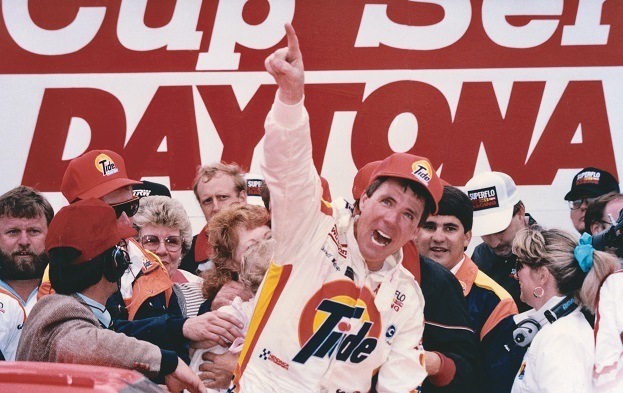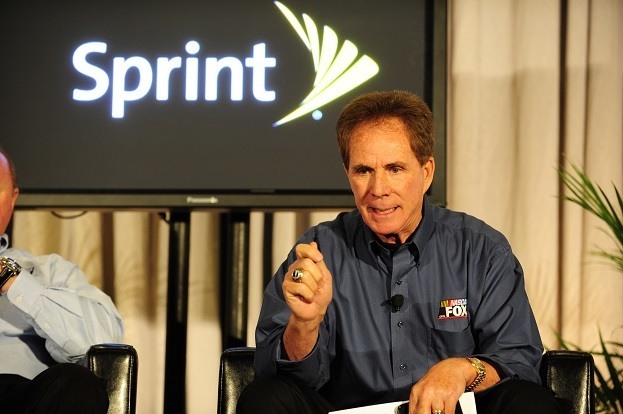
For the last 13 years, if you are a NASCAR viewer, you have grown accustomed of hearing the chant “Boogity, Boogity, Boogity” at the start of season. It has been the voice of three-time NASCAR Cup Series champion and Hall of Fame driver Darrell Waltrip acting as a lead analyst for the NASCAR on Fox broadcast team charging up the audience with that starting call.
Darrell Waltrip entered the broadcast booth after a long stock car racing career in NASCAR. Driving a Mercury, Waltrip made his Sprint Cup Series debut in 1972 (in a series then known as the Winston Cup Series) at Talladega Superspeedway. Winning his first race at his home track in Nashville in 1975, Waltrip would go become a household name the following year driving a Gatorade-sponsored for DiGard Racing. In 1981, Darrell Waltrip joined the race organization of legendary driver/car owner Junior Johnson. It was with Johnson that Waltrip won his three championships (1981, 1982 and 1985). Waltrip’s fierce presence on the track earned him a reputation for battling hard against competitors such as Richard Petty, Dale Earnhardt, Bill Elliott and Rusty Wallace. Among 84 race wins (tying him for fourth in the series for all-time race victories), Darrell Waltrip claimed a memorable 1989 Daytona 500 driving a #17 Chevrolet for Hendrick Motorsports.
A lively personality on the track, Darrell Waltrip made the transition to the broadcast booth permanently following his 2000 retirement from NASCAR Cup Series competition. Since the 2001 NASCAR season, Waltrip has been partnered with a NASCAR on Fox crew made-up of commentator Mike Joy and a former long-time crew chief Jeff Hammond (who spent much of his racing career working with Darrell Waltrip). Darrell Waltrip has also kept busy away from the track with charitable causes such as Feed the Children and Motor Racing Outreach. He has also made appearances in movies such as Talladega Nights and the popular animated Disney films Cars and Cars 2.
With the 14th season of NASCAR on Fox concluding this weekend at Dover International Speedway, Automoblog.net is humbled to have connected with the three-time NASCAR champion.
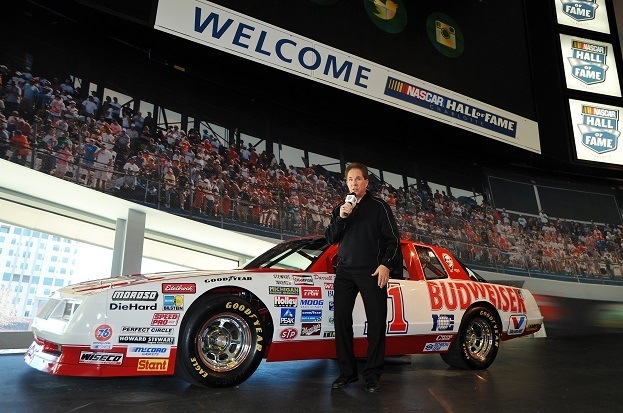
Since your retirement from the Cup series, you have been part of the NASCAR on Fox broadcast team that has underwent very few changes (In regards to on-screen talent) for 13 years. Has your perception of the sport changed from the time you have switched from the drivers’ seat to the broadcasters’ booth?
“I struggle with that mightily because I still think as a driver. With every rule change, decision and everything that happens on the track, my first thoughts are, ‘How would I respond if I was still driving?’ Then I have to pull back and remember I’m an analyst, and instead of reacting as a driver would, I have to analyze the situation objectively. What we often fail to realize is that NASCAR doesn’t make rules for just one person but rather for the entire sport, from teams to sponsors and TV partners.”
For a long time, it could be viewed that NASCAR seemed resistant to change to their top series citing tradition. However, recent years have brought several changes such as a modified points system and fuel-injected engines. While NASCAR tradition is important, what are you feelings that the series you had completed in has been greatly altered? Are you disappointed by changes or understanding the changes as a needed evolution?
“Again, my first thoughts are as a driver. Drivers don’t like change. They want things to be consistent once they figure them out. To grow the sport, NASCAR has to be thinking ahead and moving forward. What they have done has been brilliant. Fans have a tendency to accuse me of walking the corporate line, so to speak, but I think I’m objective, especially when it comes to change. The points system was the same for years, but NASCAR abandoned that. Now they’ve changed the way we determine a champion in a gutsy move. And what they’d done to the cars with other rule changes – whether we like them or not – was to move the sport forward. The Indy 500 always finished under yellow if needed, but they didn’t on Sunday because they listened to the fans and watched what NASCAR has done. IndyCar stopped the race, cleaned it up and restarted the race for a green-flag finish. NASCAR does a great job. The only thing I’d fix is the race schedule. Teams can’t continue to go on with the rigorous schedule the way it is. It’s too grueling.”
Would there be one thing in current NASCAR competition you would have wanted during your driving days? Conversely, is there something unique to your era behind the wheel you feel 2014 Cup drivers are missing out on?
“I wish we had all the safety devices drivers have today, but they didn’t exist back then. Hindsight is 20/20. I wish we’d had a HANS device, SAFER Barriers and safer seats that we have nowadays. I wish we’d had social media back in my day because it helps drivers get their message out. But I don’t know of anything that we had back then that Cup drivers today would want. We were racing to win and to put food on the table. There’s nothing we had that these guys would want. But I did like that we had only one sponsor and one paint job all year long instead of multiple sponsors to pay the bills. I loved having the Tide car all year long.”
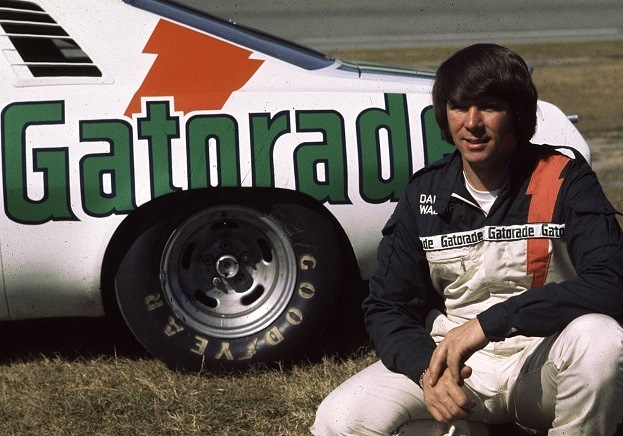
You had some great rivalries on track with the likes of Dale Earnhardt and other greats. Do you believe the current NASCAR environment is a place where dramatic rivalries can remain as heated as it did in classic cases?
“No. We could have a fight … we could go in a bar after a race or after practice and have a few beers and have fun and nobody cared. If guys today did that, it’d be all over Twitter, Facebook, TMZ and the news. We had a private life. These guys don’t. They live in a fishbowl and somebody is always taking a photo or videoing their every move. Drivers today have to watch everything they say and do so much more than we did back in my day. They just don’t want the headache of fans, sponsors and the media being mad at them if they say or do something out of line, and I can’t say that I blame them.”
A few years ago, some on social media believed you were being overly positive regarding Danica Patrick at Daytona. Were you aware of the criticism?
“People always get on me for doing what they consider ‘cheering’ for Danica, and it aggravates me because I am not favoring her over another driver – I just think she’s great for our sport. She’s a female racing 42 men every week, and I find that extraordinary. I don’t think it’s wrong to point out her success or potential, and I hope she succeeds because she can only help our sport. She has 1 million followers on Twitter and is known worldwide. I cheer for Danica, so to speak, because I know what she can mean to NASCAR.”
If you could use one of your vehicles to symbolize your career, which one of your race cars would you want to be remembered with?
“That’s a difficult call for me. The Gatorade car was a trendsetter because it probably was the first consumer-oriented sponsor in NASCAR, and the company used the hood for something other than cubic inches, which was unique to the time. But I had the most success with the Mountain Dew car, but also thought the best-looking cars were the Tide car and the chrome Western Auto car.”
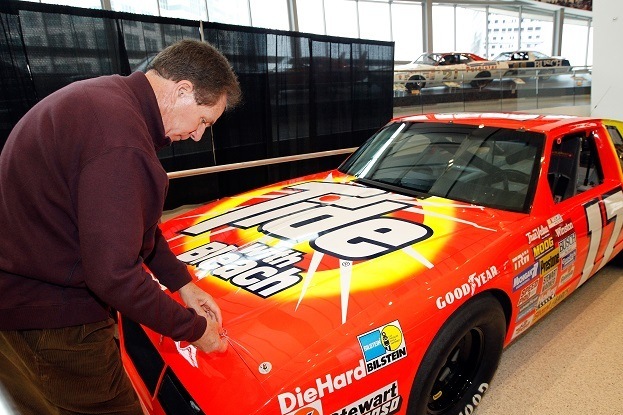
Can you please explain for the record stories about you inviting drivers to a parking lot of a K-Mart back in your NASCAR racing days?
“I did invite folks to meet me in the parking lot of a K-Mart, but I was talking to the fans. Only a few fans really understood what I was talking about. I was leading the race at Charlotte and blew an engine on the backstretch while chasing Bill Elliott and trying to pass him. The car came to rest right in front of the Ford grandstands where their employees were seated. Everybody in those stands cheered so loudly that I could hear them over the motors. I was so upset, and when I got towed around, I was asked what had happened. I said that I’d like to invite all the people on the backstretch to meet me at the K-Mart parking lot. But I had done an autograph session at the K-Mart that Friday and thousands of fans had come out to see me. I signed autographs for four hours and had a great time. I was trying to connect that autograph session and the huge crowd that turned out to the fact that I was getting relentlessly booed after blowing an engine, but for the folks who weren’t at the autograph session, they didn’t understand what I meant. It was a misunderstanding for a lot of people, but there were a lot of K-Mart parking lots that were crowded for a while! I didn’t mean it to sound the way it came out. If you weren’t at that autograph session, you didn’t know what I meant.”
Fox coverage of the 2014 NASCAR Sprint Cup Series wraps up this weekend with the FedEx 400 Benefiting Autism Speaks at Dover International Speedway. Race is scheduled for Sunday starting at 1 P.M. on Fox stations.
Photo source: NASCAR Media, Getty Images
Special thanks to Fox Sports

